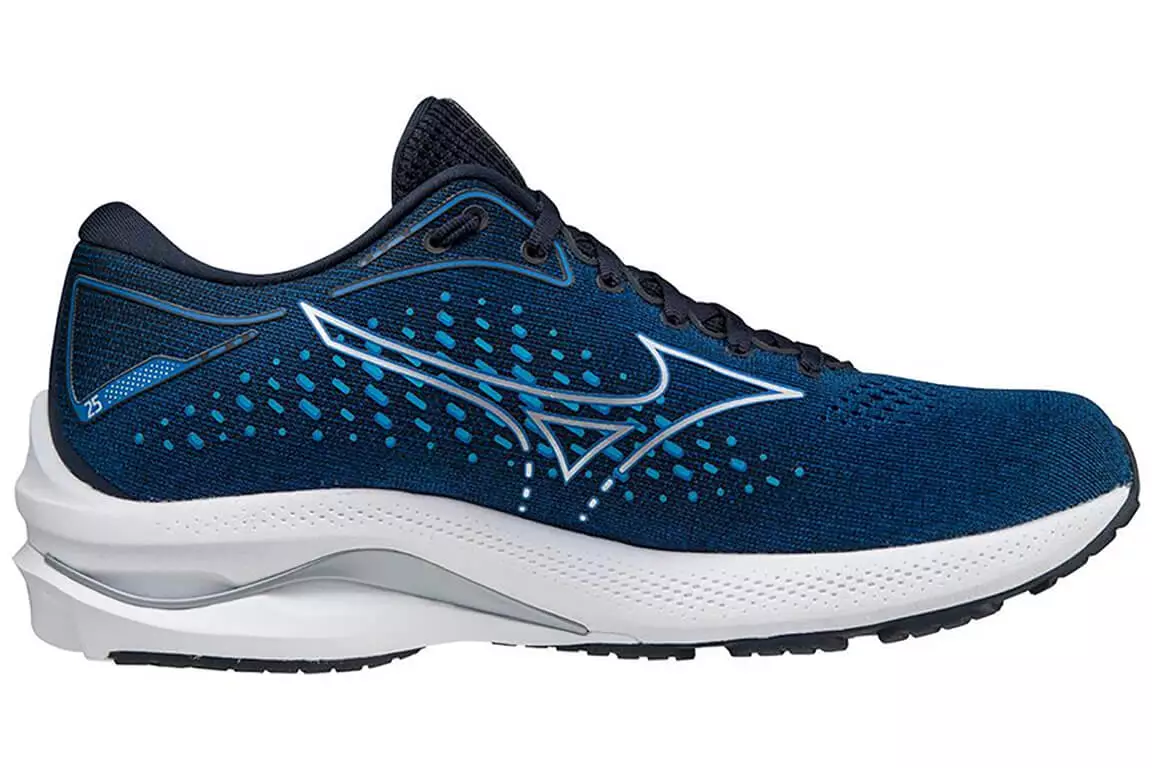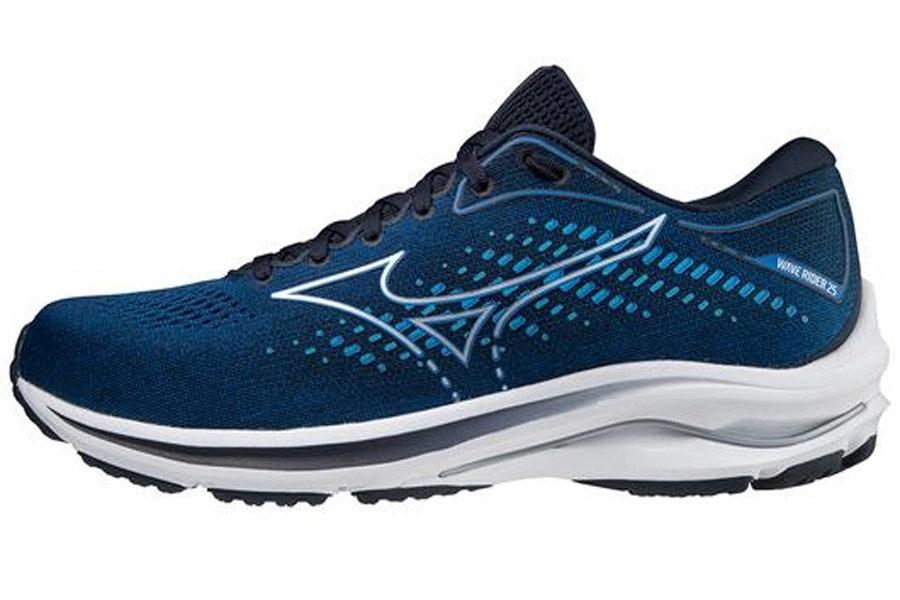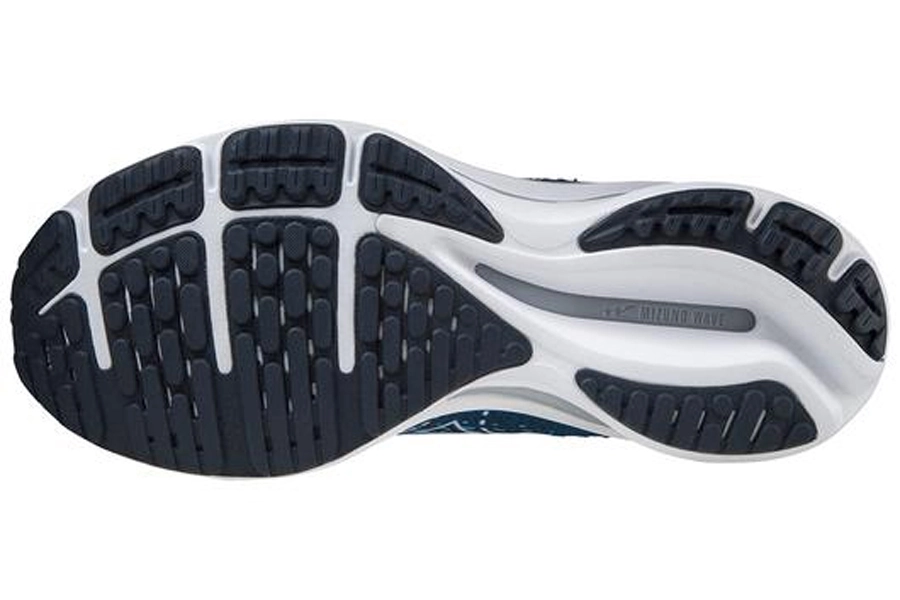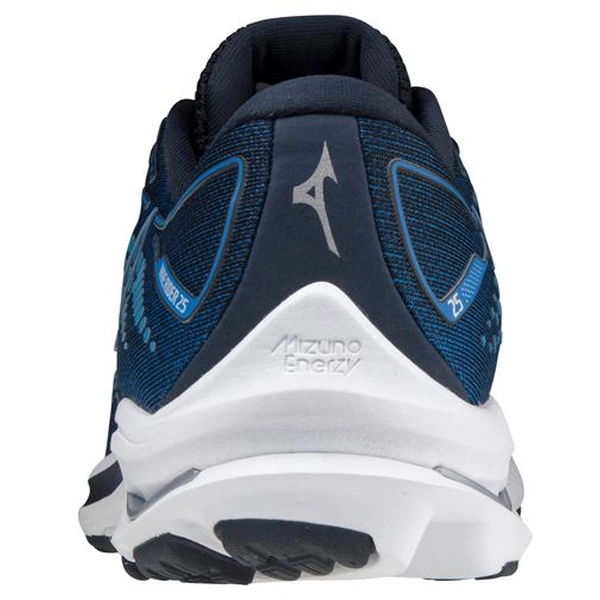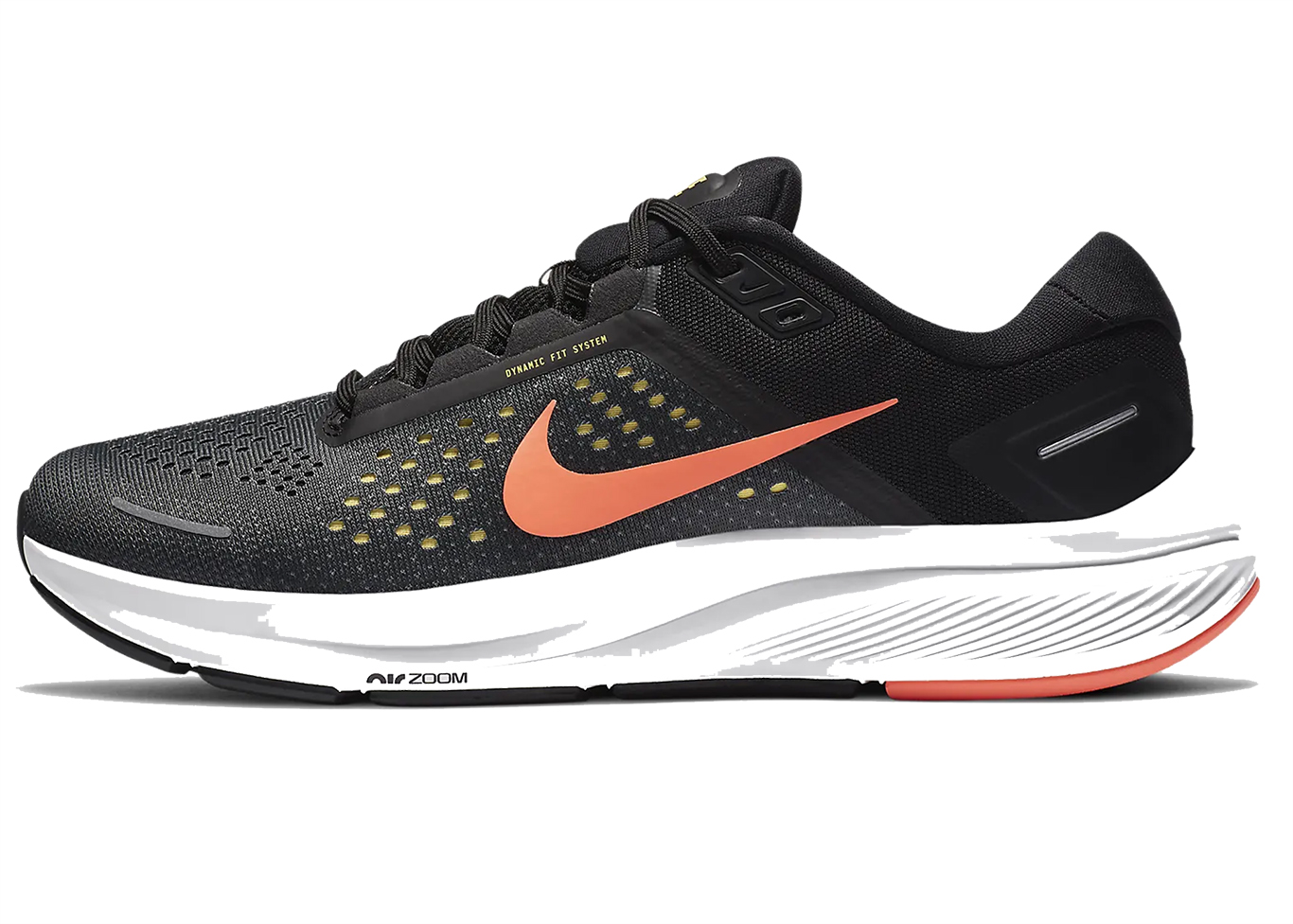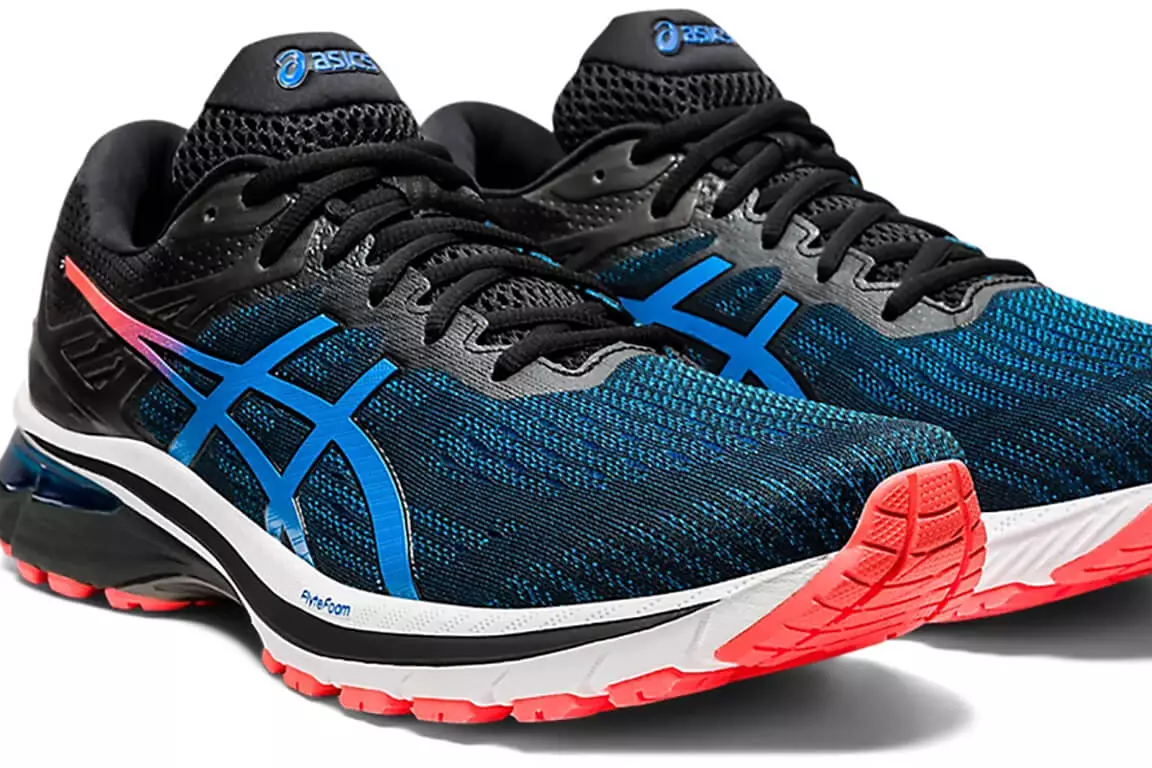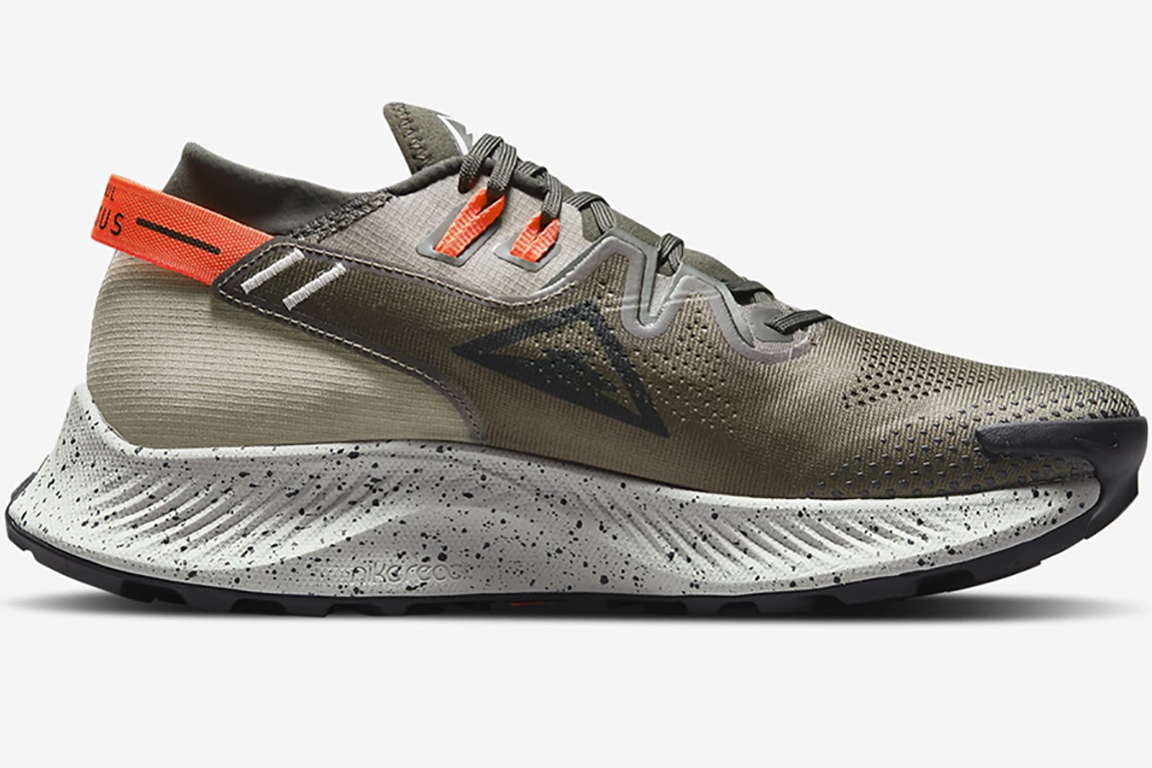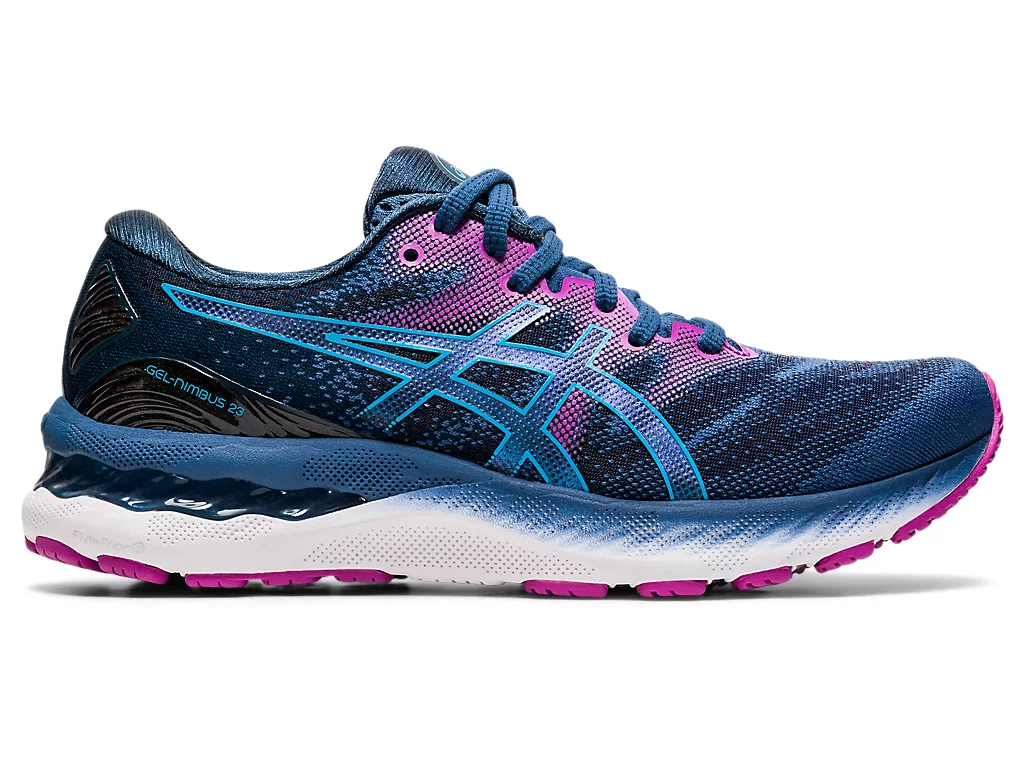Published: August 11, 2021
SCORE: 9.5
Weight: 9.7 Oz M size 9 and 8.1 oz W
Heel Drop: 12mm
Shoe Type: Neutral running shoes
Surface: Road
Pros
- Bouncy
- Seamless transition
- Secure fit upper
- Very comfortable
- Versatile
Cons
- Others may find the forefoot too soft.
Take Away
Mizuno has always stuck with its traditional shoe design comprising a plastic Wave Plate in the midsole and a pretty firm yet comfortable ride. It is a brand that appeals to loyal customers.
Well, sticking to a conventional way of doing things is different from adapting to new trends. For this reason, Mizuno tweaked the Mizuno Wave Ride 25 just a little bit to adjust to the current needs of runners. People are looking for comfort, stability, and speed, all combined in a single shoe. Mizuno has to respond to such honest needs.
Like the movement of the waves in the ocean, The Waver Rider 25 is meant to ride like you are simulating the ocean movement (ride smoothly). It comes with a full-length Mizuno Enerzy Foam sandwiching the Mizuno Wave plate to offer utmost comfort and stability. It is moderately cushioned in the forefoot and heels and can perform across different kinds of training. Mostly, the Waver Rider 25 gives you a smooth heel-to-toe transition, a replication of the wavy sensation.
Mizuno Wave Ride 25 Instant Impression
I am a big fan of Mizuno, and I have a lot to tell about the Mizuno Wave Rider series. I have the Wave Rider 24, a shoe I have loved unconditionally, even with the pretty firm ride.
The new version has a fine appearance with more refined details in the midsole. Considering my experience with the Wave Rider 24, it was never a difficult choice to purchase the Wave Rider 25.
The Wave Rider 24 and 25 are special editions of the Mizuno Wave Rider series. They feature Enerzy cushioning foam in the midsole on top of the traditional plastic Wave Plate. In this case, they are springier than their predecessors. The additional specs make the 25 version unique because the conventional plastic Wave Plate is now a bio PEBAX Polimer extending from the heel to midfoot. Also, the Enerzy Foam is now full-length.
When I bought my pair, it was easy to notice the streamlined upper; it was simple and contrasted well with the nicely sculpted midsole to give it a premium look. However, I believe that the premium aspect has been masked by the rather simple upper.
I experienced an excellent secure fit the first time I wore the Wave Rider 25. The upper was welcoming, soft, huggy, and spaces in the right places like the toe box. Running in the Wave Rider 25 was exciting. It was bouncier, softer, and more flexible than its predecessor, and the forward push was noticeable.
Mizuno Wave Ride 25 Upper Component
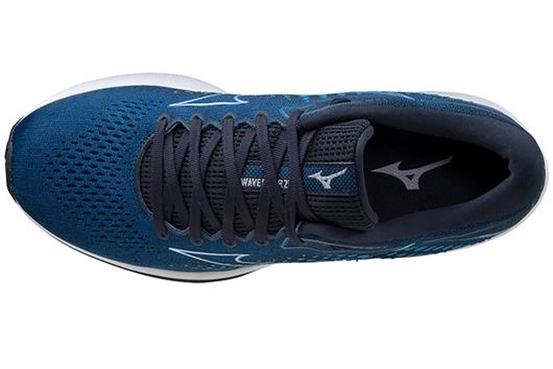
Mizuno Wave Rider 25 is concocted on a stretchy jacquard mesh with 3D overlays and a reflective Mizuno logo. Technically, the upper does not have the "wow" factor. Instead, it has almost everything you'd find in a running shoe. It is simple but with excellent execution. It is the way an upper should be; comfortable!
The upper has a spacious fitting with spaces where they need to be. The toe box is roomy and stretches well to accommodate a wide-footed runner. The mesh is well-toned down even with the stretchy upper, so it wraps well around the foot. It fits true to size and has exceptional lockdown. The toe box has perforations to enhance aeration when running. I could feel the air entering the shoe and keeping my foot cool and dry.
The tongue is gusseted and has more cushioning thrown at it to enhance comfort and midfoot lockdown. It is constructed from a soft PET mesh and has perforations to provide ventilation on a hot day. The PET mesh is also thick enough to prevent the laces from exerting pressure on top of the foot. There is no slot for attaching the tongue to the laces. However, there is no cause for alarm because it is fully gusseted. Besides, Mizuno went for flat laces and seven eyelets on each side. The extra eyelets are well-positioned to provide the extra snug fit if need be. I did not find the laces too long. They are of the right length and make a nice runner's knot.
The heel collar has moderate padding and feels huggy. Mizuno Wave Rider 25 does not have a heel counter. Still, it has a good structure that complements enough cushioning to hold down the foot when running.
The upper of the Mizuno has moderate padding and is thicker than the previous version. It is well streamlined and has minimal overlays to create a deceiving simple look. Somehow it evinces a masked premium look.
I did not experience any slippage or hot spots. It fits well all-around and has a secure and comfortable lockdown. The mesh is quite thick, so it felt quite warm running in Mizuno Wave Rider 25. The aeration is just okay. Overall, Mizuno did well with the upper, and I have no major complaint to make.
Mizuno Wave Ride 25 Sole Component
The midsole of the Mizuno Wave Rider 25 has few upgrades compared to the previous version. It has additional specs to enhance performance but still retains the oomph of the traditional Mizuno running shoes. The sculpting of the midsole is very aesthetic with a Mizuno signature. It complements the rather simple and nice upper.
The first notable change from the previous version is the additional stack height of 36mm in the heel and 24 mm in the forefoot compared to the Mizuno Wave Rider 24, which had 32mm to 20mm heel drop. Still, the heel drop remains unchanged.
In addition to the additional stack height, Mizuno placed a full-length Mizuno Enerzy Foam on top and bottom of the Wave plate while adding density in both levels. The Enerzy Foam midsole is softer, and it has a profound rebound, especially in the heels.
In the previous version, the Enerzy foam only made up about 30% of the midsole. It was strategically placed in the heels and forefoot. Note that the Enerzy foam is one of the top-performing cushioning foams in the running shoe market.
The Wave Rider 25 exhibits stability since the medial sides of the midsole form high sidewalls that guide the foot to a neutral position. It also extends up to below the heel to keep the foot in place.
I have done about 110 miles with the Mizuno Wave Rider 25 on the road. It is a joy run-in because of the responsiveness and smooth transitioning. The ride is not as firm as in the previous version or soft but sits there in the middle. I still feel like it is on the softer side, but I wouldn't compare it to the Fuel Cell Rebel V2 which is highly soft.
I love the marble-colored rubber Mizuno put in the outsole from the toe zone to the heel to provide a full ground contact and protect the midsole throughout the three states of the gait cycle; heel, mid-foot contact, and toe-off.
The rubber is positioned in high abrasion areas like the lateral side of the heel to protect the heel strikers from ground impact and protect the midsole cushioning component from the force exerted during ground contact, especially by a heel striker.
The rubber in the forefoot is not as hard as that in the forefoot. This explains why I experienced the softness and profound responsiveness in the forefoot. Generally, the forefoot is very flexible, yet stable and I can tell that it all has to do with the structural design of the outsole.
I looked carefully at the forefoot and noticed how carefully the flex grooves are arranged. They do not cut through the medial side, which ensures some form of stability in the forefoot. The
I am satisfied with what Mizuno has done with the outsole, especially how the rear flex groove is deeply and carefully curved from the heel to the midfoot to enhance full ground contact. At over 100 miles, there are no signs of wear. The traction is excellent, and I have taken note of its good performance on the treadmill.
This shoe rides like the New Balance 1080v11, and Brooks Ghost 13. It has a forward emotional sensation, seamless toe-off with a significant rebound in slow and fast paces. It is also very stable and rides naturally. It did varying speeds, both slow and fast, and the energetic midsole was very compliant. It feels exciting running in the Mizuno Wave Rider 25.
Mizuno Wave Ride 25 Conclusion
Mizuno concentrated on tuning up the shoe a little bit and making the midsole somehow softer than the previous version. It never got it wrong because everything is the way it should be; snug fit, stable, energy return, and smooth roll from heel to toes. It is one of the best contenders for high mileage shoes, particularly for easy and moderate paces. It is soft in the forefoot to allow up to 8 miles or even further.
Mizuno acknowledges that runners don't have the same foot width, so the Wave Rider 25 comes in varying widths.
Though Mizuno went for a high 12mm heel drop, it goes unnoticed when running. Interestingly, by modifying the geometry of the Wave Plate and adding full-length Enerzy foam, the result is an exciting ride that is incomparable to many running shoes of its class. In addition, the forward push sensation is noticeable.
Mizuno Wave Rider 25 can perform well as a daily trainer. It is a robust shoe that can handle cross-training. Besides, at 9.7oz, it is a fairly lightweight running shoe that is less heavy than the Adidas Solar Boost, Asics Novablast, and slightly heavier than New Balance 1080v11. However, it stands out, and it isn't easy to compare it to the models I have mentioned. I find it a fantastic daily trainer shoe. Maybe some runners would want it to be softer or more neutral. Honestly, I can't complain, I like it this way, and the price is reasonable.
Any qualifying purchases via the Amazon affiliate links earn us small commissions, which will help us continue with the excellent work of bringing you quality shoe reviews.
Reviewd by Cliff Davis
Cliff Davis is a regular trainer living in San Francisco. He is a roadrunner who is more into cross-training. He is also a pretty slow runner who does 5k in about 26 mins. At 37, Cliff has clocked thousands of miles under his feet. He is seeking to improve his personal best.

